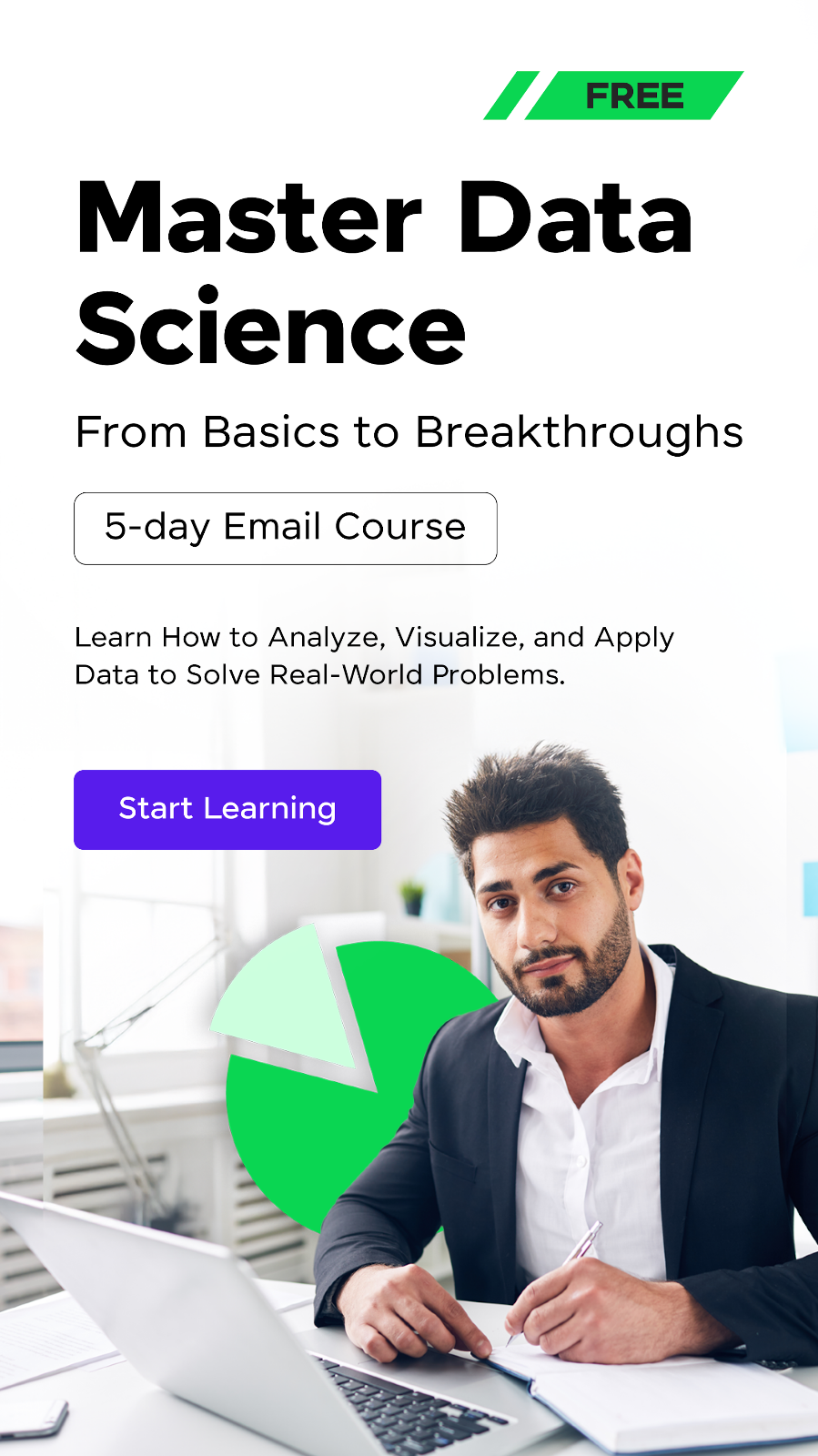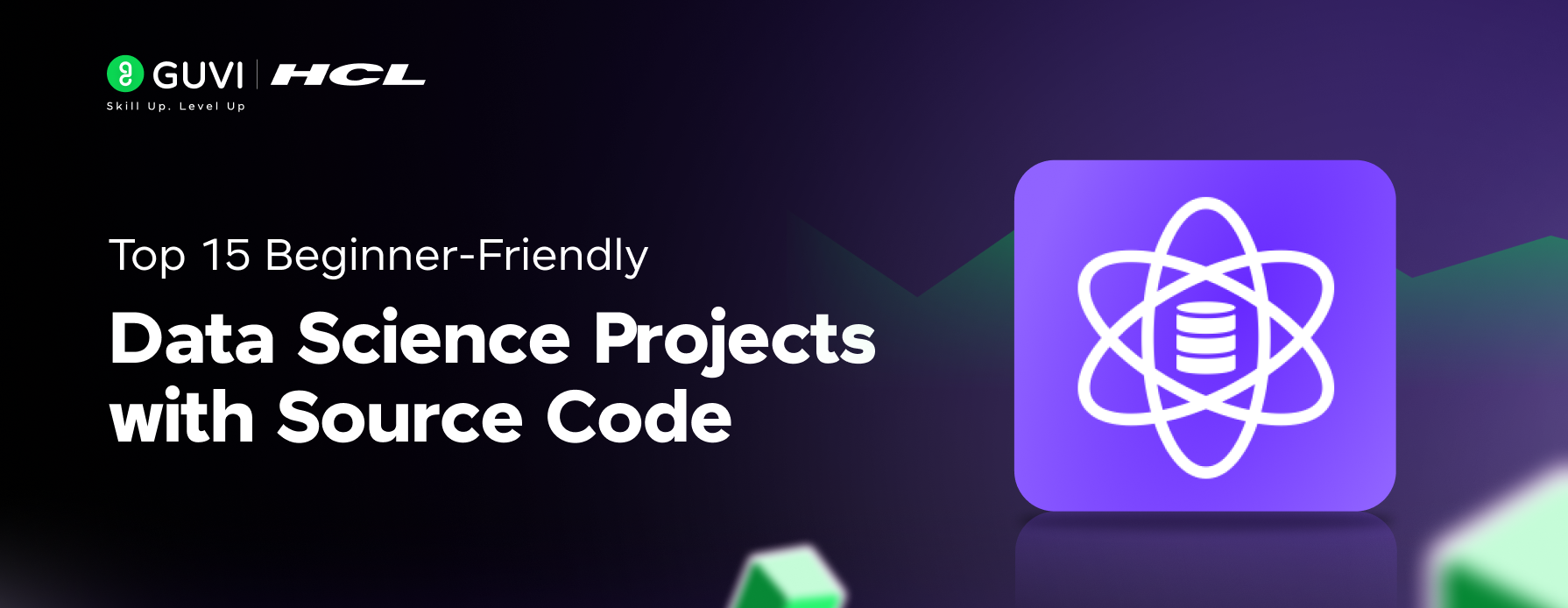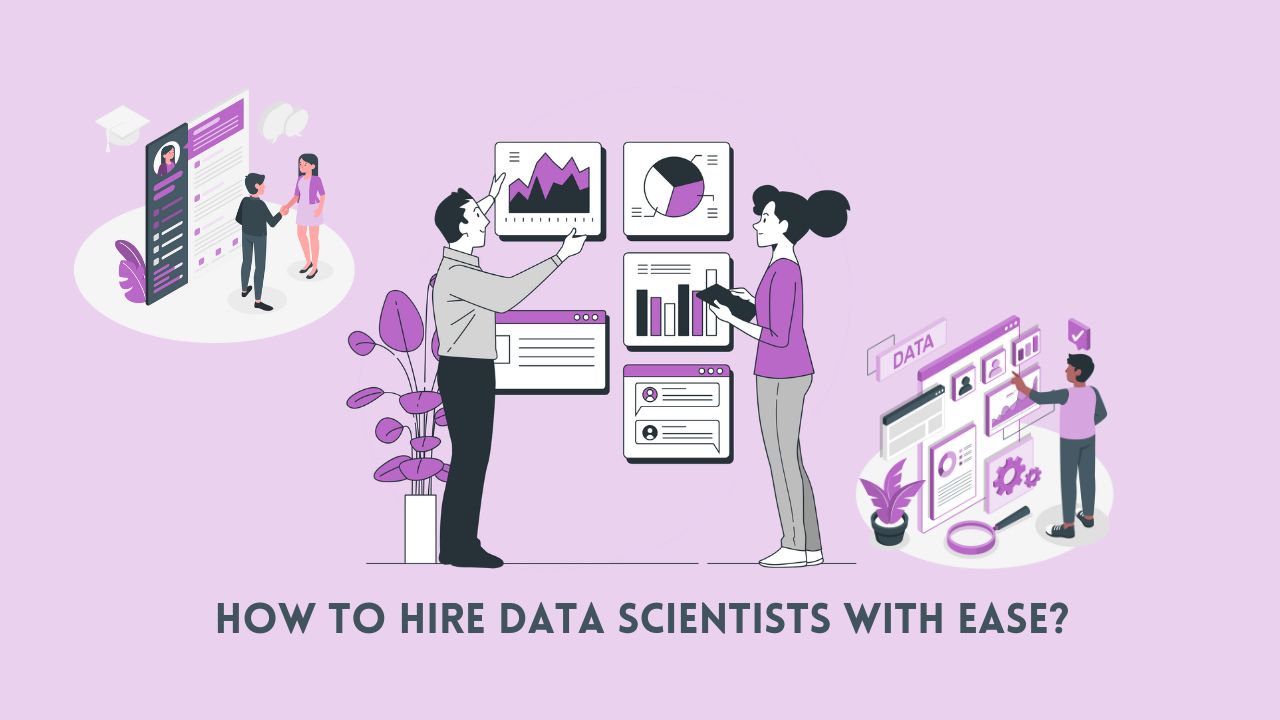
Understanding the Data Science Process: A Comprehensive Guide
Mar 05, 2025 5 Min Read 9898 Views
(Last Updated)
Now that everything is becoming wireless and technology is booming at lightning speed, as a by-product, a lot of data is generated on a daily basis. These volumes are unimaginable.
To maintain these data, the field of data science was born and people involved do the hard work of collecting, refining, storing, and managing the data. To do this, there is a dedicated data science process.
This data science process streamlines the workflow for data scientists and enables them to manage data effectively. That is what we are going to see in this article, a detailed analysis of the data science process.
So, without further ado, let’s get started!
Table of contents
- What is the Data Science Process?
- Understanding the Data Science Process
- Understanding the Problem
- Data Collection
- Data Preparation
- Exploratory Data Analysis (EDA)
- Data Modeling
- Model Deployment
- Communicating Results
- Best Practices for the Data Science Process
- Tools and Frameworks for the Data Science Process
- Conclusion
- FAQs
- What is feature engineering, and why is it important?
- How do data scientists handle missing data?
- Why is data cleaning important?
- What is the importance of data visualization in the data science process?
- How does data science contribute to innovation?
What is the Data Science Process?

The data science process is a systematic approach to analyzing and interpreting data to extract meaningful insights and solve real-world problems.
It involves understanding the problem at hand, collecting relevant data, cleaning and preparing that data, exploring it to find patterns and relationships, building predictive models, and finally, using these models to make informed decisions.
This data science process helps businesses and organizations make data-driven decisions, improve operations, and innovate by turning raw data into actionable knowledge.
Understanding the Data Science Process
Data science has become a buzzword in recent years, but what exactly does it do? If you have a basic understanding of data science, you might already know that it involves extracting insights and knowledge from data.
If you don’t have a basic understanding, then consider enrolling for a professionally certified online Data Science course by a recognized institution that can help you get started and also provide you with an industry-grade certificate!
Now, the data science process is more structured and involves several critical steps. Let’s break down the data science process:
1. Understanding the Problem

The first step in the data science process is understanding the problem. This might seem obvious, but it’s crucial to start with a clear and precise understanding of what you’re trying to solve. This involves:
- Defining the objectives: What is the end goal? Are you trying to predict future sales, classify customer reviews, or detect fraud?
- Identifying constraints: What are the limitations? These could be data availability, time constraints, or computational resources.
- Gathering domain knowledge: Understanding the context of the problem helps in making informed decisions throughout the process.
In the data science process, when defining the objectives, it’s important to be as specific as possible. Vague goals like “improve customer satisfaction” need to be translated into measurable outcomes such as “reduce customer churn rate by 10% in the next quarter.”
This specificity helps in aligning the data science efforts with the business goals and in measuring the success of the project.
2. Data Collection

Once you have a clear understanding of the problem, the next step in the data science process is to collect the relevant data. This can be done through various means such as:
- Web Scraping: This method is useful for gathering data from public websites. It requires knowledge of web technologies and legal considerations to avoid violating terms of service. Python libraries like Beautiful Soup and Scrapy are commonly used for web scraping tasks.
- APIs: Many online platforms, such as social media sites and financial data providers, offer APIs to access their data. Using APIs ensures that you get structured data, often in real-time, which is crucial for time-sensitive analyses.
- Databases: Internal databases are gold mines of historical data. SQL is the go-to language for querying relational databases, while NoSQL databases like MongoDB are used for unstructured data.
- Surveys and Sensors: Surveys are effective for collecting user opinions and feedback, while sensors are invaluable in IoT applications for gathering real-time data from physical devices.
Data collection is not just about gathering large volumes of data, it’s about gathering quality data. The source of data significantly impacts the subsequent analysis.
Python is the best programming language for Data Science and in case your concepts are not very clear in Python and have the determination to improve, consider enrolling for GUVI’s Self-Paced Python course that lets you learn in your own way!
3. Data Preparation

Raw data in the data science process is often messy and needs to be cleaned and prepared before analysis. Data preparation involves:
- Data cleaning: Handling data such as missing values, removing duplicates, and correcting errors.
- Data transformation: Converting data into a suitable format, such as normalizing or standardizing values.
- Feature engineering: Creating new features from existing data that can improve the performance of machine learning models.
4. Exploratory Data Analysis (EDA)
EDA is a crucial step in the data science process where you explore the data to uncover patterns, anomalies, and relationships. This involves:
- Descriptive statistics: Calculating mean, median, standard deviation, etc.
- Visualization: Creating plots such as histograms, scatter plots, and box plots to visualize data distributions and relationships.
- Correlation analysis: Identifying relationships between different variables.
Exploratory Data Analysis (EDA) is not just a preliminary step but a vital part of the data science process. It helps in forming hypotheses about the data and guides the selection of appropriate models.
Descriptive statistics provide a summary of the central tendency, dispersion, and shape of the dataset’s distribution. This helps in getting a quick overview of the data and identifying any anomalies.
5. Data Modeling

After understanding the data, the next step in the data science process is to build predictive models. This involves selecting and applying appropriate algorithms. Common techniques include:
- Supervised learning: Algorithms like linear regression, decision trees, and neural networks are used when the outcome is known.
- Unsupervised learning: Techniques like clustering and dimensionality reduction are used when the outcome is unknown.
- Model evaluation: Using metrics such as accuracy, precision, recall, and F1 score to evaluate model performance.
Choosing the right model depends on the problem at hand and the nature of the data. In supervised learning, the goal is to learn a mapping from input features to output labels. For example:
- Linear regression is suitable for predicting continuous outcomes, such as house prices.
- Decision trees and random forests are versatile and can handle both classification and regression tasks.
- Neural networks are powerful for complex tasks like image and speech recognition.
In unsupervised learning, the goal is to find hidden patterns in the data. For instance:
- Clustering algorithms like K-means group similar data points together, which can be useful for customer segmentation.
- Dimensionality reduction techniques like PCA (Principal Component Analysis) reduce the number of features while preserving the essential patterns in the data.
Model evaluation is critical to ensure that the model performs well not just on the training data but also on unseen data. Techniques like cross-validation help in assessing the model’s generalizability.
6. Model Deployment

Once you have a satisfactory model, the next step in our data science process is to deploy it in a real-world environment. This involves:
- Model integration: Integrating the model into an application or system.
- API development: Creating APIs to allow other systems to access the model.
- Continuous monitoring: Regularly checking the model’s performance to ensure it continues to perform well over time.
Model deployment is where the theoretical models meet the practical application. Integrating the model into existing systems requires collaboration with software developers to ensure seamless integration.
Creating APIs allows other systems to interact with the model, making it accessible to various applications.
Continuous monitoring is crucial because the performance of models can degrade over time due to changes in data patterns. Setting up automated monitoring and alerting systems helps in identifying and addressing any issues promptly.
7. Communicating Results

The final step is to communicate the results to stakeholders. This is crucial for making informed business decisions. Effective communication involves:
- Data visualization: Creating clear and intuitive visualizations to convey findings.
- Reporting: Writing comprehensive reports that explain the methodology, findings, and recommendations.
- Presentations: Delivering presentations to stakeholders to discuss the insights and potential actions.
Communicating results effectively requires translating technical findings into actionable insights. Data visualization tools like Tableau, Power BI, and Python libraries such as Matplotlib and Seaborn help in creating impactful visual representations of data.
Reports should be structured to include an introduction, methodology, results, and recommendations. Using clear language and avoiding technical jargon ensures that non-technical stakeholders can understand the insights.
Presentations should be concise and focused on the key findings and their implications. Engaging storytelling techniques can make the data more relatable and compelling.
If you are a beginner to data science and wondering how to learn it in the best way possible, read our blog – Best Way to Learn Data Science!
Best Practices for the Data Science Process

The data science process involves several critical steps, from understanding the problem to deploying the model and communicating the results. To ensure success, follow these best practices at each stage.
- Understand the Business Context
- Ensure Data Quality
- Document the Process
- Perform Thorough Exploratory Data Analysis (EDA)
- Choose the Right Models and Techniques
- Focus on Feature Engineering
- Implement Robust Model Evaluation
- Ensure Ethical and Responsible Data Science
- Facilitate Collaboration
- Communicate Insights Effectively
These are some of the best practices that you should keep in mind whenever you are implementing data science process in your project.
Tools and Frameworks for the Data Science Process
Data science involves a range of tools and frameworks that help you collect, process, analyze, and visualize data. Here are some of the key tools and frameworks used in the data science process:
- Programming Languages:
- Data Manipulation Libraries:
- Pandas
- NumPy
- Data Visualization Tools:
- Matplotlib
- Seaborn
- Tableau
- Machine Learning Frameworks:
- scikit-learn
- TensorFlow
- Keras
- Big Data Tools:
- Hadoop
- Spark
- Data Storage and Retrieval:
- SQL
- NoSQL Databases (e.g., MongoDB)
- Data Collection Tools:
- BeautifulSoup
- Scrapy
- Integrated Development Environments (IDEs):
- Jupyter Notebooks
- Spyder
- Collaboration and Version Control:
- Git
- GitHub
- APIs and Data Access:
- RESTful APIs
- SQLAlchemy
These tools and frameworks are essential for different stages of the data science process, from data collection and cleaning to analysis, modeling, and visualization. Using the right combination of these tools can streamline your workflow and enhance the efficiency and accuracy of your data science projects.
If you want to learn more about the Data Science process and its implementation in the real world, then consider enrolling in GUVI’s Certified Data Science Course which not only gives you theoretical knowledge but also practical knowledge with the help of real-world projects.
Conclusion
In conclusion, the data science process is a structured approach that involves understanding the problem, collecting and preparing data, exploratory data analysis, modeling, deployment, and communication.
Each step is crucial for extracting meaningful insights and making data-driven decisions. Following these best practices enhances the success of your data science projects.
Remember, data science is an iterative process. You might need to revisit some steps based on new findings or changing requirements.
FAQs
Feature engineering involves creating new features from existing data to improve model performance. It is crucial because the quality of features significantly impacts the effectiveness of the models.
Techniques for handling missing data include imputation (filling in missing values), removal of incomplete records, and using algorithms that can handle missing data.
Data cleaning ensures the accuracy and quality of the data, which is essential for building reliable and valid models. Poor data quality can lead to incorrect conclusions and decisions.
Data visualization makes complex data more accessible and understandable, helping to communicate findings effectively to stakeholders and guiding decision-making.
Data science drives innovation by uncovering new insights, identifying opportunities for improvement, enabling predictive analytics, and supporting the development.



















![10 Impressive Data Visualization Project Ideas [With Source Code] 13 Data Visualization Project Ideas](https://www.guvi.in/blog/wp-content/uploads/2024/11/best_data_visualization_project_ideas_with_source_code_.webp)





Did you enjoy this article?